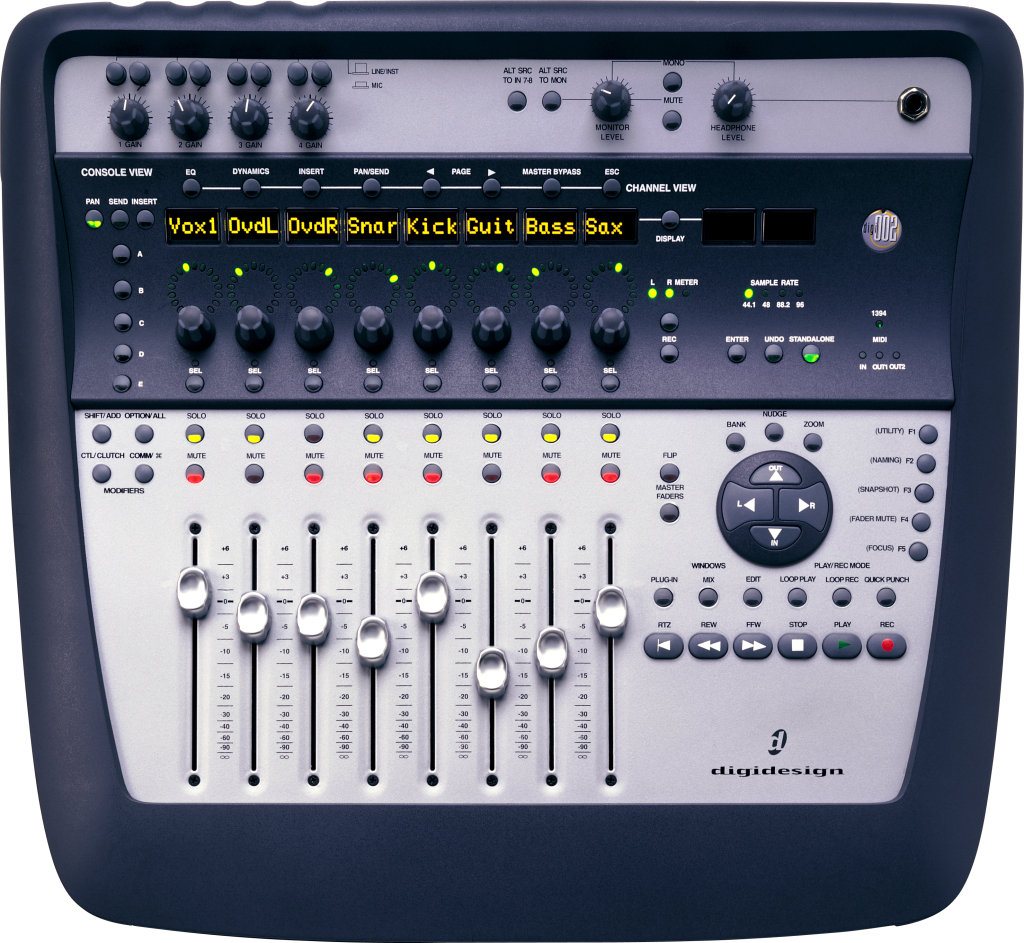Digi 002 Rack Drivers Mac Download
Chinese (Traditional and Simplified), English, French, German, Italian, Japanese, Korean, Spanish Website Pro Tools is a developed and released by for and which can be used for a wide range of and sound production purposes. Pro Tools can run as standalone, or operate using a range of external and internal (PCI) or with onboard (DSP) to provide such as and. Like all digital audio workstation software, Pro Tools can perform the functions of a and, along with additional features that can only be performed in the digital domain, such as non-destructive editing, using the Undo feature. Most of Pro Tools' basic functions can be controlled within Edit or Mix windows, which the user can see on a. The Edit window displays audio and (MIDI) tracks, and provides graphical representation of the information recorded or imported. Here, audio can be edited in a, fashion.

Mar 28, 2008. How do I download the Digi 002 Drivers ONLY. 003, Mbox 2, Digi 002, original Mbox, Digi 001 (Mac). 4 Installing Pro Tools Software Pro Tools HD Authorization A Pro Tools HD authorization lets you run Pro Tools HD software on a supported Mac or Windows. Pro Tools, ICON, VENUE and all the products and solutions you've come to count on are just a click away. Don't see what you're after? Just use the search box in the.
Digidesign ASIO Driver: The Digidesign ASIO Driver is a single-client, multichannel sound driver that allows third-party audio programs that support the ASIO Driver standard to record and play back through the following Digidesign hardware: Pro Tools HD audio interfaces. Digi 002 Rack Mbox 2. Mbox Full-duplex.
Pro Tools supports,,, and audio at up to 192 kHz. Tinyumbrella Free Download Windows 64 Bit. Pro Tools can handle,, AIFC,, and SDII audio files. Pro Tools has also most recently incorporated video editing capabilities, so users can import and manipulate high definition video file formats such as XDCAM, MJPG-A, PhotoJPG, DV25,, and more.
It features, tempo maps, elastic audio, and abilities. The Pro Tools mix engine has traditionally employed 48-bit fixed point arithmetic, but is also used in some cases, such as with Pro Tools HD Native. The new HDX hardware uses floating point summing. Contents • • • • • • • • • • • • • • • • • History [ ] Pro Tools was developed by graduates Evan Brooks, who majored in and, and Peter Gotcher. The first incarnation of Pro Tools was introduced in 1984 under the brand name Sound Designer. At the time, the pair were creating and selling sound chips under their Digidrums label. Sound Designer was originally designed to edit sounds for the sampling keyboard, but it was rapidly ported to many other sampling keyboards, such as the S900 and the.
Thanks to the developed by Brooks, Sound Designer files could be transferred to and from one sampling keyboard to another keyboard made by a different manufacturer. This universal file specification, along with the printed source code to a 68000 assembly language interrupt driven driver, were distributed through MIDI interface manufacturer Assimilation, which manufactured the first MIDI interface for the Mac in 1985. Macintosh Editor/librarian software development pioneers and visionaries, Beaverton Digital Systems, provided a dial-up service called MacMusic starting in 1985 which used 2400- modems and 100 MB of disk, and used on a 1 MB, allowing users of Sound Designer to download and install the entire Emulator II sound library to other less expensive samplers. MacMusic allowed users worldwide to share sample libraries across different manufacturers platforms without copyright infringement. Beaverton Digital Systems President John Connolly already had several conversations with Evan Brooks in 1985, as he was listed as a contact for technical support for the Assimilation MIDI toolkit, and the current Apple operating system in 1985 did not have native MIDI communications drivers. Komunikasi Serial Arduino Uno here. One evening in 1986 at John Connolly's home, an alert was sent online from MacMusic requesting the system operator, and to Connolly's surprise it was Peter Gotcher, thanking him for providing such a revolutionary service and making Sound Designer a much more attractive program to buy, by leveraging both the universal file format and by developing the first online sample file download site in the world, many years before the use soared.
In 1987, Gotcher and Brooks discussed with the possibility of integrating their renamed 'Sound Tools' software into the Emulator III. E-mu rejected this offer and the pair started Digidesign, with Gotcher as president and Brooks as lead engineer. Sound Tools debuted on January 20, 1989 at (National Association of Music Merchandisers). At this stage Sound Tools was a simple computer-based stereo audio editor. Although the software had the possibility to do far more, it was limited by the hard drive technology, which was used to stream audio and allow for the that Sound Tools offered. The first version of Pro Tools was launched in 1991, offering four tracks and selling for $6,000 USD. The core engine technology and much of the user interface was designed by and licensed from a small San Francisco company called OSC, known at the time for creating the first software-based digital multi-track recorder, called DECK, in 1990.